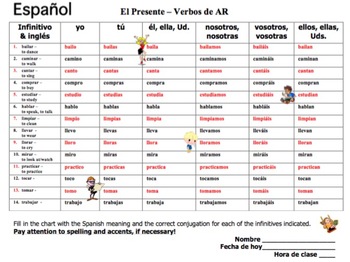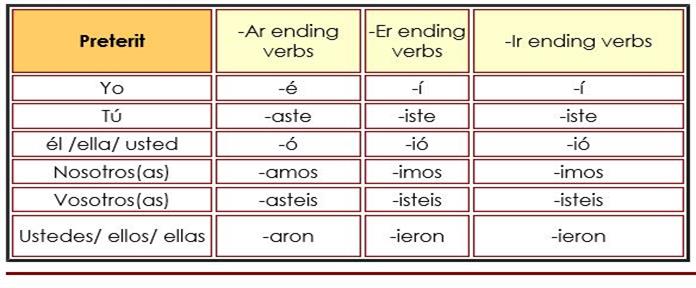
In English, the simple present often has an implied regularity or habitual connotation to it. English often uses the present continuous (example below with beber) instead of the simple present, so you’ll end up using the simple present a lot more often in Spanish than you do in English. To talk about something being done presently, drop the -er and add one of these endings. Er Conjugation: Spanish Regular Verb Endings Simple Present Tense Endings You’ll see an exception to this rule in the simple future, where you only need to add an ending to the intact infinitive.

Simply put, to conjugate an -er verb, drop the -er and add the appropriate ending according to the person and tense.įor example, in the present tense you add -o, -es, -e, -emos, -éis, or -en to the remaining stem after removing -er. The stem, or raíz (literally “root” in Spanish), is the part that occurs before the -er, -ir, or -ar. This is where conjugation comes in.įor regular verbs, the infinitive lends its stem to its conjugated forms in a predictable way. The equivalent meaning in English is the same as “to ,” so “beber” translates to “to drink.”Įxcept when stacking two verbs together (“I ” / “Me ”), the infinitive form needs to change to express the who and when. You can spot them easily in Spanish because they retain their original ending of -er, -ir, or -ar. The infinitive ( infinitivo) form of a verb is its most basic form. Both English and Spanish have a lot of irregular verbs which simply need to be memorized, but learning the rule for regular verbs makes conjugation much easier.īeing exposed to verbs in context (rather than just in a chart) is also crucial to becoming comfortable using them – not to mention it’s more fun! Use Lingvist’s Spanish Course to see verbs in context, as well as look over grammar tips to clarify concepts explicitly as needed. In most cases (aside from irregular verbs), the English past tense is formed by adding -ed to the word. Person (singular) Present tense Past tense First person I walk I walked Second person You walk You walked Third person He/She walks He/She walked Most verbs only change in the third person singular (see below) in English, but all verbs change to distinguish when something occurs. Though native speakers may not notice it, English verbs also change depending on who performs it and when the action occurs.

For more on the different person categories and personal pronouns in Spanish, see this guide. Spanish uses one extra person category that corresponds to addressing “you all / you guys” in English. The form of a verb changes to show who perpetrated the action (person) and when it occurred (tense).
Spanish verb endings chart ar er ir how to#
Find out how How To Conjugate Verbs in Spanish


 0 kommentar(er)
0 kommentar(er)
